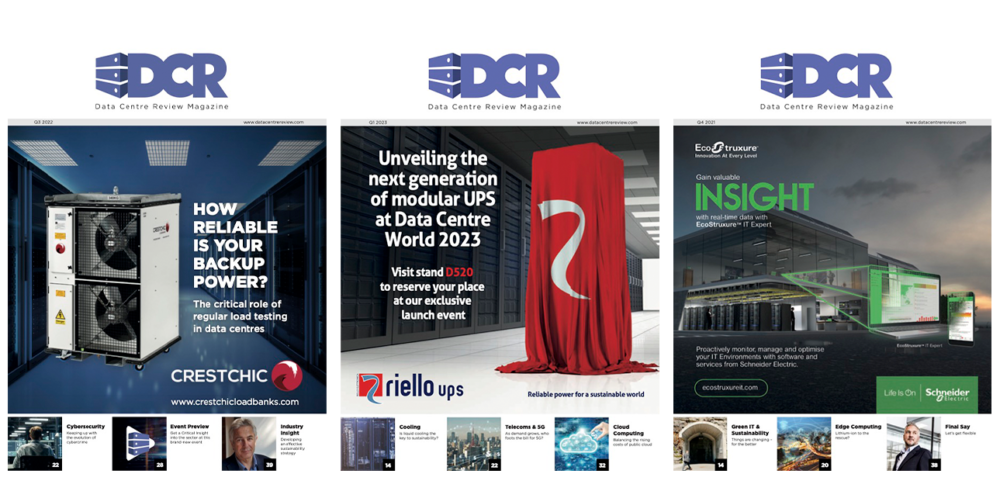Jon Healy, Managing Director, EMEA at Salute, argues that decarbonised, scalable data centre infrastructure – and faster grid connections – are now the cornerstone of credible UK AI ambitions.
With significant investments being made in AI research and development by both the public and private sectors, the UK Government is stepping up its efforts to establish itself as a global leader in the field. But a crucial element is frequently missed: how will this digital goal be realised in the absence of a robust and sustainable infrastructure? Considering that Amazon’s proposed data centre development may use as much electricity as the entire town of Burnley, this question is becoming increasingly urgent.
A study conducted by the Grantham Institute and the London School of Economics suggests that by 2035, artificial intelligence might help cut CO2 emissions by up to 5.4 billion tonnes. This highlights the contradiction at hand – meeting surging demand for compute while remaining committed to climate targets. Bridging this gap depends on the data centre sector and its partners taking urgent action to decarbonise operations.
While the UK’s ambitions are bold, it is not acting in isolation. Across EMEA, nations including Germany and the UAE are investing in sovereign AI capabilities, all while grappling with similar infrastructure pressures. Common themes are emerging: scaling energy grids, building next-generation facilities, and complying with increasingly strict environmental regulations – all within constrained energy markets.
Sector-wide responsibility
Policy pressure is growing. While the EU Taxonomy demands a more stringent approach to defining what constitutes sustainable infrastructure, the Corporate Sustainability Reporting Directive (CSRD) has upped the bar for emissions reporting in the EU. When it comes to fulfilling investment requirements that call for feasible decarbonisation plans, it is the operators who are directly impacted by these rules.
Sustainability teams are no longer solely liable for cutting down emissions from data centres. Its now a shared responsibility across the board – operations, engineering, compliance, and policy should all work in amalgamation. Throughout a facility’s journey, every phase, right from site selection and manufacturing to power sourcing and maintenance, contributes to shrinking emissions. Progress will remain fragmented unless these functions take coordinated action. Improving efficiency alone is no longer enough. With AI workloads increasing rapidly, so too will energy consumption. The response must include a whole-systems view, embracing renewable energy, circular design principles, and comprehensive emissions tracking.
Infrastructure and energy challenges
The infrastructure needed to sustain large-scale AI is already showing indications of stress. For instance, the grid capacity is constrained in high-demand areas like the South East and London. It may take up to ten years for new connections to become accessible in certain situations. The UK’s ability to increase its home computing capability is severely affected by this.
Limitations such as delays in obtaining planning permits and uncertainty about long-term energy availability also slow down the construction of new data centers. If these issues aren’t addressed soon, the UK might become a net importer of computers. This could threaten its goals for national innovation and digital leadership. This is a risk that a country hoping to lead in AI cannot afford to take.
Similar issues are unfolding in the EMEA. Certain restrictions and project delays caused by local resistance, environmental concerns, and a lack of grid headroom in the Netherlands and Ireland. The entire EMEA region may encounter the same obstacles that the UK is already facing without cross-border cooperation and strategic investment in energy infrastructure.
Aligning funding with delivery
AI investment is an important stepping stone, but it needs to be accompanied by a strong commitment to sustainable infrastructure. The advantages of upgrading legacy locations, speeding up grid connection procedures, and embracing clean energy should be taken into consideration by policymakers. Clear planning frameworks would also support the development of efficient facilities in regions currently underserved.
The rapid growth of computing must be balanced with climate obligations. Without a defined strategy that shows how AI growth aligns with national carbon budgets, the risk is that progress in digital technology may come at the expense of environmental targets.
EMEA governments need to ensure that AI targets are supported by realistic infrastructure planning. This requires joined-up thinking between regulators, operators, and power providers – both within and across borders.
Tackling complexity and emissions simultaneously
Data centre operators face a dual challenge: managing increasingly complex infrastructure while lowering emissions. Many are exploring modular construction, advanced cooling methods, and renewable energy sourcing. However, legacy infrastructure and inconsistent industry reporting standards often hinder efforts to move quickly.
Operators must adopt more transparent and robust approaches to emissions tracking during both construction and operations. Setting common benchmarks and improving data sharing across the sector are key steps to making meaningful progress.
Seizing the moment
The UK data centre sector stands at a pivotal point. With the parallel rise of AI and decarbonisation imperatives, there is a clear opportunity for greater collaboration. To seize it, data centre infrastructure must be recognised as a national strategic priority.
This calls for a full-system strategy, where government, industry, and energy stakeholders work in concert. To protect the UK’s AI ambitions and climate commitments, infrastructure development must be both scalable and sustainable.
Looking beyond borders, the opportunity for regional cooperation across EMEA is significant. Without it, progress will remain fragmented. But with it, the region can position itself as a global leader in both innovation and environmental responsibility.


